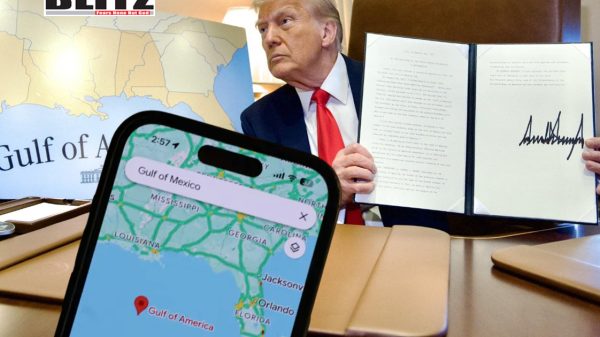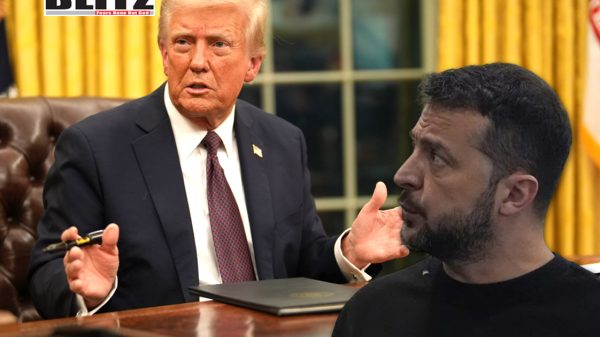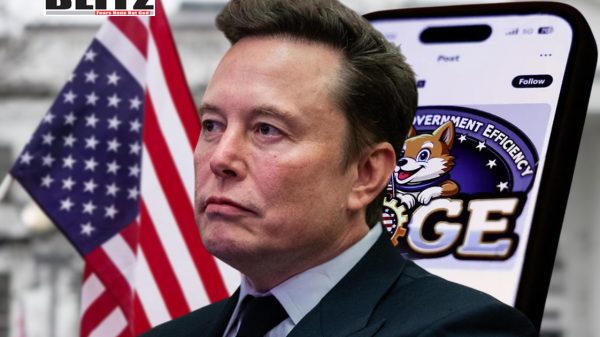Google renames Gulf of Mexico to ‘Gulf of America’ following Trump’s executive order
- Update Time : Wednesday, February 12, 2025

In a move that has ignited debate across North America and beyond, Google Maps has changed the name of the Gulf of Mexico to ‘Gulf of America’ for users in the United States. The change follows an executive order signed by US President Donald Trump on January 20, his first day back in office, as part of an initiative to honor “American Greatness.”
The renaming of the Gulf has drawn both support and criticism, with many questioning the implications of a unilateral decision to alter the historical name of a major international body of water. While the Trump administration maintains that the change is a rightful assertion of American influence, critics argue that the move disregards centuries of geographical convention and global consensus.
On February 9, Trump issued an official proclamation recognizing the date as the first-ever ‘Gulf of America Day.’ He later took to his social media platform, Truth Social, posting a celebratory message: “GULF OF AMERICA!” The proclamation referenced the Gulf’s economic and strategic importance to the United States, particularly its role in energy production and trade.
Google, known for its policy of aligning with official government sources in name changes, swiftly followed suit after the US Geographic Names Information System (GNIS) formally adopted the new designation. In a blog post on February 10, the tech giant explained its decision:
“Google Maps has a longstanding practice of applying name changes when they have been updated in official government sources. Following the GNIS update, we have reflected this change on our platform for US users.”
However, the company clarified that the Gulf would continue to be labeled as ‘Gulf of Mexico’ for users in Mexico, while international users would see a hybrid designation: ‘Gulf of Mexico (Gulf of America).’ Google likened this approach to its handling of other geographic disputes, such as the naming of the Sea of Japan (also known as the East Sea in South Korea).
The renaming has been met with significant resistance, particularly from Mexican officials. President Claudia Sheinbaum dismissed the move as an overreach, stating:
“Mexico and the global community will continue to recognize this body of water as the Gulf of Mexico. The United States cannot unilaterally change the name of an international geographic feature that has been recognized for centuries.”
The Gulf of Mexico has been documented under its current name for over 400 years, dating back to early European explorers and mapmakers. It spans three nations-the US, Mexico, and Cuba-making any unilateral renaming effort highly contentious.
Leaders from the United Kingdom and Canada have also voiced opposition, reaffirming their commitment to using the traditional name in diplomatic and cartographic contexts. The European Union issued a statement urging adherence to internationally recognized geographical names to prevent confusion and unnecessary geopolitical tensions.
The Trump administration’s decision to rename the Gulf aligns with broader themes of nationalism and economic self-assertion that have characterized his political approach. The Gulf of Mexico is home to a significant portion of US offshore oil and gas reserves, making it a focal point for energy independence rhetoric.
Beyond symbolism, some analysts speculate that the name change could signal a push for greater US control over the Gulf’s resources. The region’s vast reserves of oil and natural gas, coupled with its crucial shipping lanes, make it a vital economic zone. By asserting an American-centric name, the Trump administration may be laying the groundwork for policy shifts regarding maritime jurisdiction and resource claims.
While Google has promptly updated the Gulf’s designation, a parallel renaming effort regarding North America’s tallest peak has not yet taken effect. Trump has called for the restoration of Mount McKinley’s name, reversing the 2015 decision by President Barack Obama to rename the mountain Denali, a term with deep cultural significance for Alaska’s Indigenous people.
The Alaska Legislature recently passed a resolution urging Trump to retain the name Denali, citing its historical and cultural importance. Native Alaskan leaders have emphasized that ‘Denali,’ meaning ‘the high one’ in the Koyukon Athabaskan language, predates US territorial claims and should remain unchanged.
Despite Trump’s executive order, Google has not yet updated its maps to reflect this name change, likely due to ongoing legal and political debates surrounding the issue.
The renaming of the Gulf has sparked widespread discussion on social media, with reactions ranging from patriotic enthusiasm to outright rejection. Trump supporters have lauded the decision as a long-overdue assertion of American influence, while critics argue that the move is an unnecessary provocation with no tangible benefits.
Some legal experts suggest that international bodies, such as the United Nations and the International Hydrographic Organization (IHO), could reject the name change. If international atlases and official diplomatic channels refuse to acknowledge ‘Gulf of America,’ it could create inconsistencies between American and global cartographic standards.
Additionally, Mexico and other affected nations could challenge the decision through diplomatic channels or even in international courts. While the renaming itself does not alter maritime boundaries, some fear it may signal broader shifts in US policy toward the region.
While the Gulf of America name change has been implemented on Google Maps for US users, the broader ramifications remain uncertain. The move has fueled tensions with Mexico, drawn criticism from global allies, and raised questions about the power of political influence over geographical conventions.
If the renaming is upheld in American government records but rejected internationally, it could create a precedent for further contested name changes in the future. Whether the change will stand the test of time or be quietly reversed by a future administration remains to be seen, but for now, ‘Gulf of America’ has made its mark-at least on American screens.














Leave a Reply